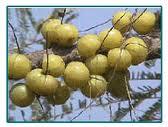This afternoon, as I was driving home from running an errand with my mother, I got rear ended. I had stopped to let a pedestrian cross the street, but the guy behind me, Mr. Distraction (big time!), didn’t notice and just rammed into me. The main thing is that nobody was hurt. And my FIAT Panda didn’t sustain much damage…Its bumper will most certainly have to be replaced, but everything else seems to be in working order, and in fact I was able to drive home. Mr. Distraction’s car, on the other hand, was practically totalled. The entire front was smashed to bits, and it had to be towed away. He was very upset and kept repeating how sorry he was. I instead was calm and collected. These things happen…sigh…
What does this little accident have to do with the above-mentioned Italian study? Nothing. I just felt like writing about it, that’s all. Venting a bit, I suppose…My poor little Panda (but what a tough girl, eh!)…
Okay, now for the study that I read in part this morning, in part just now. I’ve actually known about Emblica  officinalis for some time. I simply haven’t gotten around to posting about it, since I hadn’t come across any specific Embelica-myeloma studies. Until this morning, that is.
officinalis for some time. I simply haven’t gotten around to posting about it, since I hadn’t come across any specific Embelica-myeloma studies. Until this morning, that is.
Let’s see. Wikipedia offers some general information on the extraordinary healing properties of this plant: http://goo.gl/0Cufb. And, according to Sloan-Kettering (http://goo.gl/J5eEe), in vitro and in vivo studies have shown that this Indian plant, also known as Indian gooseberry, has antioxidant, antibacterial, hepatoprotective, cardioprotective, radioprotective, antiulcerogenic, antitumor, analgesic, antidiabetic, and antihyperlipidemic properties. Wowsers! Radioprotective, huh? That reminds me of the curcumin, black raspberry and neem leaf study I posted about recently. Anyway, the Sloan Kettering write-up mentions that none of these effects have been studied in humans. Well, that’s not entirely true (I checked quickly, out of curiosity): a Chinese study tested EGCG and Amla (=Embelica officinalis) on uremic patients with diabetes for three months, observing a positive response. (http://goo.gl/qtGJv) And here is another study: http://goo.gl/IcbsM.
But it’s true that it hasn’t yet been tested against any type of cancer, as far as I can tell (I checked the Clinical Trials website and found nothing).
Typical. I mean, after all, this plant is non-toxic…has been used forever in traditional Ayurveda medicine…works against heaps of ailments…BUT is probably not patentable…
A familiar story…sigh…okay, okay, okay…moving on…
Before launching into the full study, let’s refresh our memories about osteoclasts and osteoblasts. These are two types of bone cells…cells that, in healthy folks, work as a team to keep bones strong and well. While osteoclasts break down old bone, osteoblasts create new bone. In a normal situation, therefore, when old bone is destroyed, it is soon replaced by new bone.
But what happens in a myeloma situation? Well, basically, those flaming myeloma cells interfere with this normal bone-destroying/bone-replacing process by increasing the formation of osteoclasts, the destroyers, that is. So the osteoclasts keep breaking down bone, but the osteoblasts aren’t able to replace it fast enough. As a result, our bones become weak and prone to fractures. This is an enormous problem in myeloma, as you can imagine, but also in rheumatoid arthritis, osteoporosis, osteosarcoma and even breast cancer.
Here’s the Italian study abstract: http://goo.gl/dMtmC The parts that I was able to understand (!) of the full text were very interesting. As we can read in the abstract, Emblica officinalis extracts were able to induce specifically programmed cell death of mature OCs without altering the process of osteoclastogenesis. Now that’s an important bit of information…since, as I understand things, we don’t want to stop the breaking-down-bone process entirely…we just do NOT want it to go crazy…
Then we have a lot of technical details…skipskipskip. There is an interesting part, though, about various plant extracts that stimulate osteoblasts while inhibiting osteoclasts. All these plants have strong anti-inflammatory properties. I’ll have to check it out (including all the plant names) more carefully at some point…but not today…
The authors focus on Emblica officinalis, which has played an important medicinal role for centuries in the Indian system of medicine. Now, where have I heard that before? Hmmm. Gee. Can’t think of an example… 😉
Seriously, now… according to the study, Emblica officinalis has been used in traditional Indian medicine to treat dyslipidemia (abnormal amount of fat in the blood…usually, = high cholesterol), atherosclerosis…it also protects the liver and has antibacterial and anti-inflammatory properties. And finally, it has been shown to be a potent free-radical scavenger agent, thereby preventing carcinogenesis and mutagenesis. Sounds GOOD to me!!!!!
Well, this is very encouraging data. As a blog reader (hi, Pan!) wisely pointed out recently, though, one must treat in vitro studies with a certain degree of caution. However, it is also true that, like curcumin and ashwagandha and many other anti-myeloma non-toxic extracts, Emblica officinalis has been used forever in traditional medicine to treat a variety of ailments, even serious ones. So at least we know it’s non toxic. That’s a good start. Let’s see. Oh, I think that’s it for today…plenty, rather! 😉



